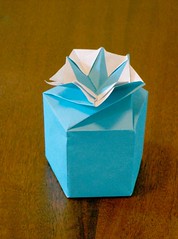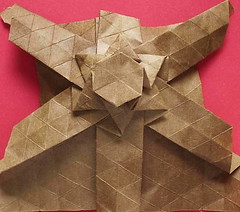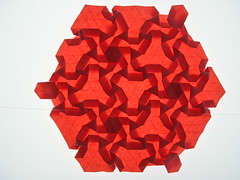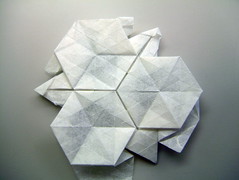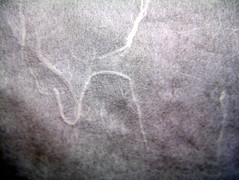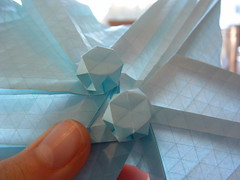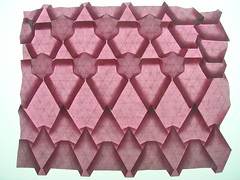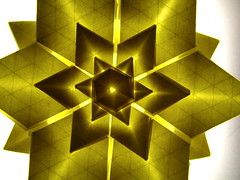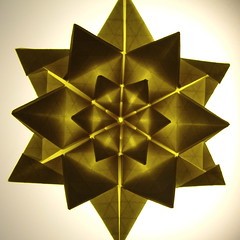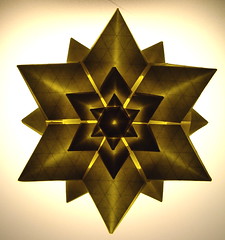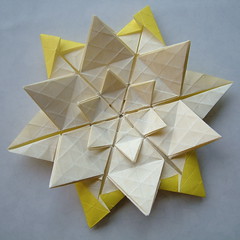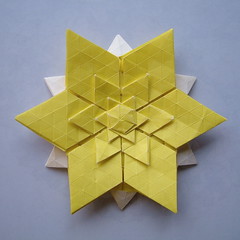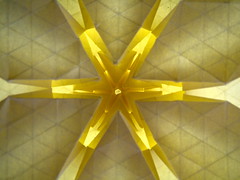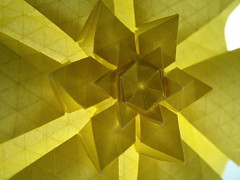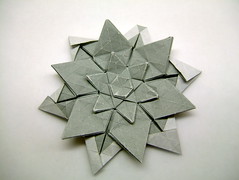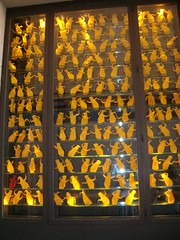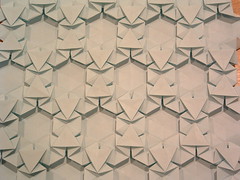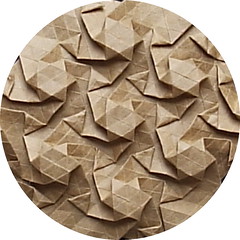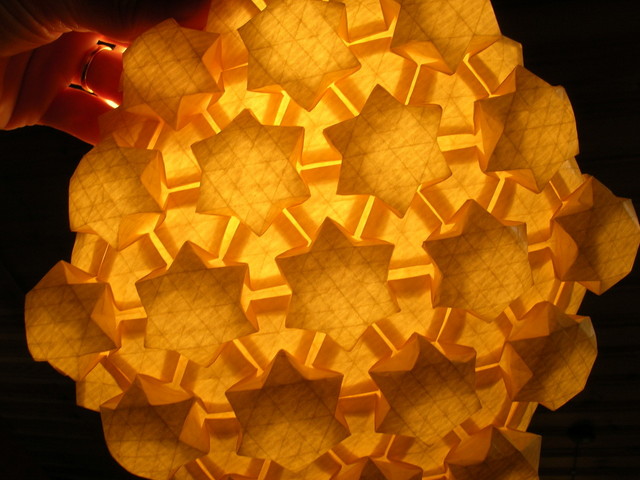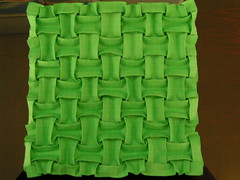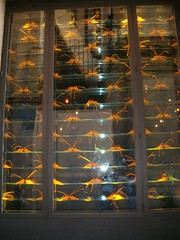So I had a hard time finding out what sort of Methyl Cellulose I should use on thin paper like unryu (like washi, made with mulberry or something similar). MC makes it stiff- you get it as a powder and mix it up, apply it, let it dry, etc.
I got a great tip from someone on the Origami-L mailing list to use Sodium Carboxymethyl Cellulose, which apparently dries stiffer than regular methyl cellulose. I'm not a chemist (that's my wife!) so I really wouldn't know, but I checked out the place he recommended. it was $26.95 for a 100g bottle, which would have lasted quite a while but seemed expensive to the cheap old man inside me.
So having put this off for a while (and I picked up a large supply of great papers that need it!) I happened across something this weekend that seems to solve my problem.
at my parent's house, working down in my dad's woodshop, I noticed a can of "spray starch" he uses to make his work shirts press flat and stiff. I looked at the ingredients list, and lo and behold- besides water and propellant, the main ingredient was none other than Sodium Carboxymethyl Cellulose.
I tested it out on paper- sprayed it with the stuff (called "Magic Sizing") and ironed it flat using a normal clothes iron (use a sheet of linen or other smooth thin cloth between your iron and the paper or you'll get starchy stuff all over the iron. yuck.)
it makes for VERY flat and smooth paper, but very springy and strong. it's a joy to fold. and there's really not much waiting for it to dry, as it takes about 3 minutes to really soak in, and then about 2 or 3 minutes to iron it flat and dry.
the best part? the stuff in the spray can cost about $1, and it's a big can!
or maybe the best part is the lovely laundry smell the paper has after you're done. (I'm looking for "fragrance free" spray, but haven't found any yet.)
I tested several different brands of "spray starch", and only the Magic Sizing brand specifically lists the methyl cellulose in the ingredients. the others probably have something similar, but it's just listed as "polymers" etc. they seem to work about the same, though, so I wouldn't worry about it too much if you can't find this particular brand.
I tested various levels of application (ranging from a light spray to a full soaking) but there's only so much MC the paper can absorb, so the supersoaking doesn't do much other than make your ironing work harder. Also, if the paper gets too wet, it becomes very difficult to eliminate wrinkles, etc.
Ironing larger sheets (1m squared) becomes tricky, but I'm working on a process for that. it's not really solved yet, though.
I'm working on better documentation for this whole process, so if it's interesting for you I'd suggest waiting until I'm finished.
you are also, of course, welcome to contact me any time, at
origomi@mac.com.




